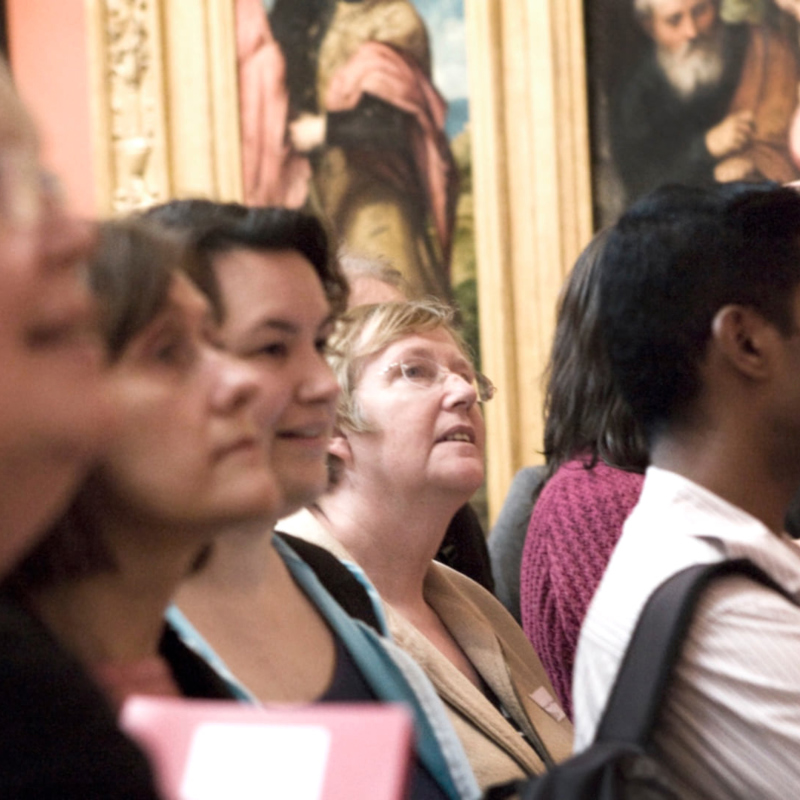About
As part of our Bicentenary celebrations, 12 of the nation’s most iconic and well-loved paintings from the collection were lent to 12 venues across the UK.
Gradually the paintings are returning to the Gallery and this series of 45- minute talks has been planned to welcome them home.
For more information on the National Treasures and participating galleries, click here.
Caravaggio, 'The Supper at Emmaus'

Painted at the height of Caravaggio’s fame, this is among his most impressive domestic religious pictures. He brilliantly captures the dramatic climax of the story, the moment when the disciples suddenly see what has been in front of them all along.
Turner, 'The Fighting Temeraire'

Set against a blazing sunset, the last voyage of the Temeraire takes on a greater symbolic meaning, as the age of sail gives way to the age of steam.The veteran warship had played a distinguished role in the Battle of Trafalgar in 1805, but by 1838 was over 40 years old and had been sold off by the Admiralty.
Canaletto, 'The Stonemason’s Yard

This intimate view of Venice, weather-beaten and dilapidated, is one of Canaletto’s masterpieces. In the early morning sun, workmen chisel away at pieces of stone. Everyday life continues around them: a mother rushes to comfort her crying child, watched by a woman on the balcony above.
Vermeer, 'A Young Woman standing at a Virginal'

The young woman at the keyboard holds our eye with a direct gaze. The empty chair suggests she is expecting someone and the large painting of a naked Cupid, the god of erotic love, on the wall behind her may be a signal that she is waiting for her lover.
Artemisia, ' Self Port St Catherine of Alexandria'

Artemisia Gentileschi, the most celebrated female artist of the seventeenth century, appears in the guise of Saint Catherine of Alexandria, a Christian saint martyred in the early fourth century. She leans on a broken wheel studded with iron spikes, to which she was bound and tortured, and which became her standard attribute in art. Her right hand, delicately holding a martyr’s palm between thumb and forefinger, is brought to her chest.
Velázquez The Toilet of Venus ('The Rokeby Venus')

This is Velázquez’s only surviving female nude and one of his most celebrated works. Venus, the goddess of love, reclines languidly on her bed, the curve of her body echoed in the sweep of sumptuous satin fabric. The pearly tones of her smooth skin contrast with the rich colours and lively brushstrokes of the curtain and sheets.



A National Treasure returns
Tickets
Members: £20
This is a Members' exclusive event. Please show your membership card and ticket to gain entry to the event.
Please meet at the Getty Desk located in Annenberg Court for registration and directions to the event.


